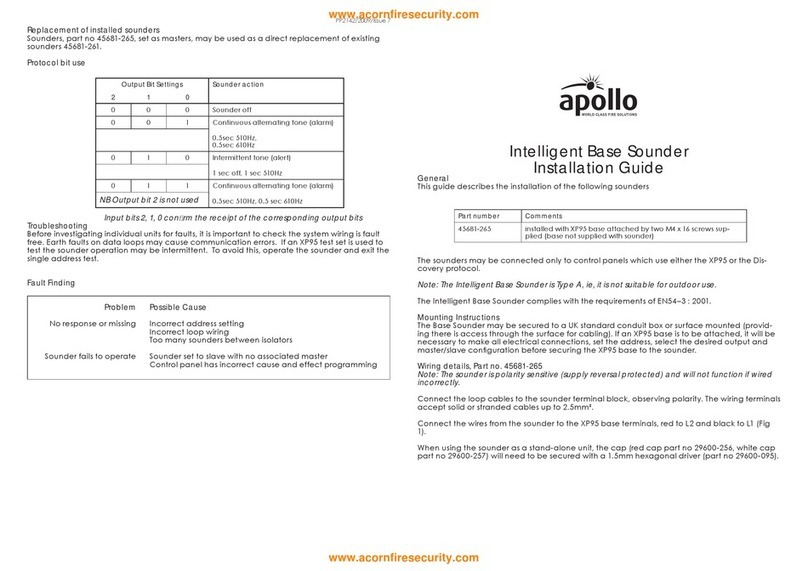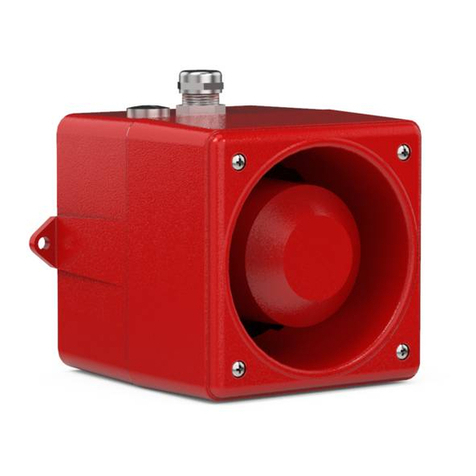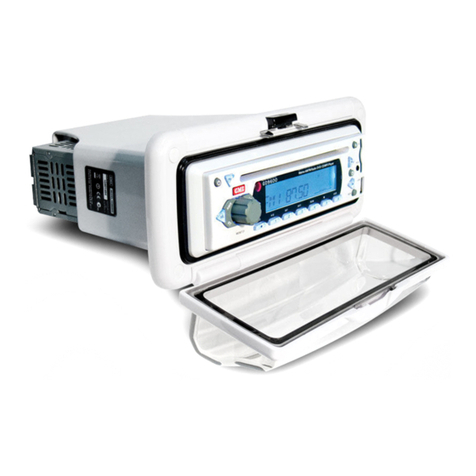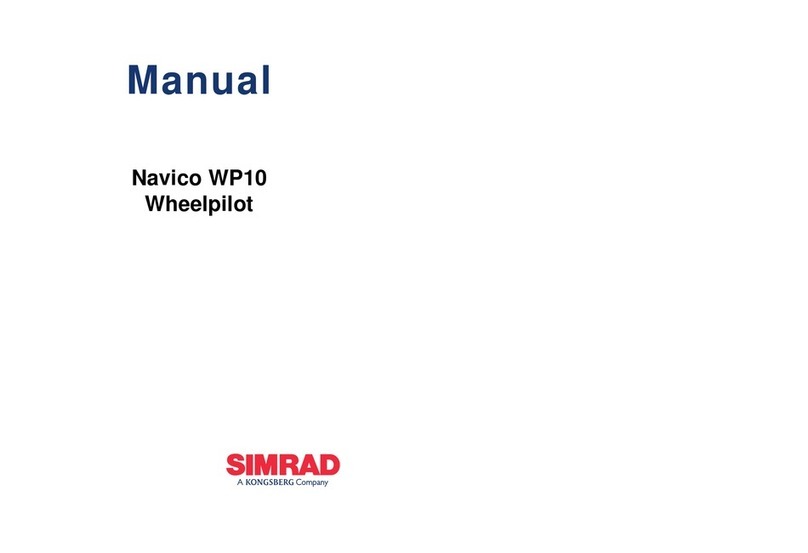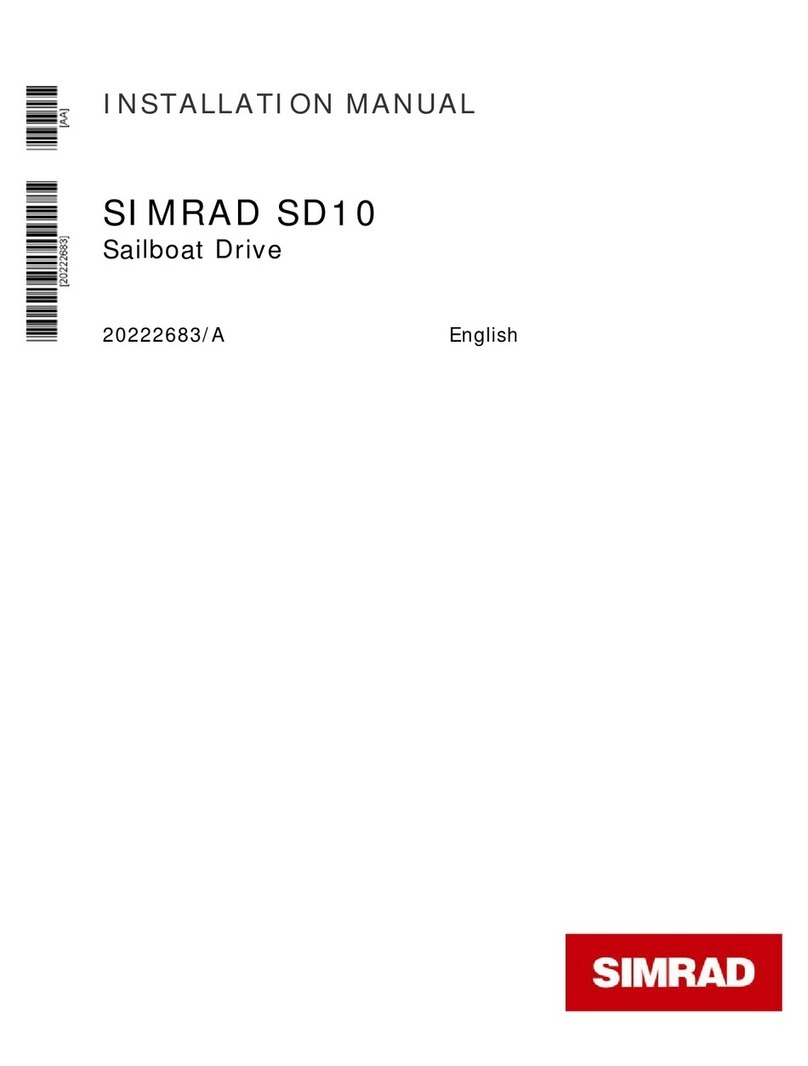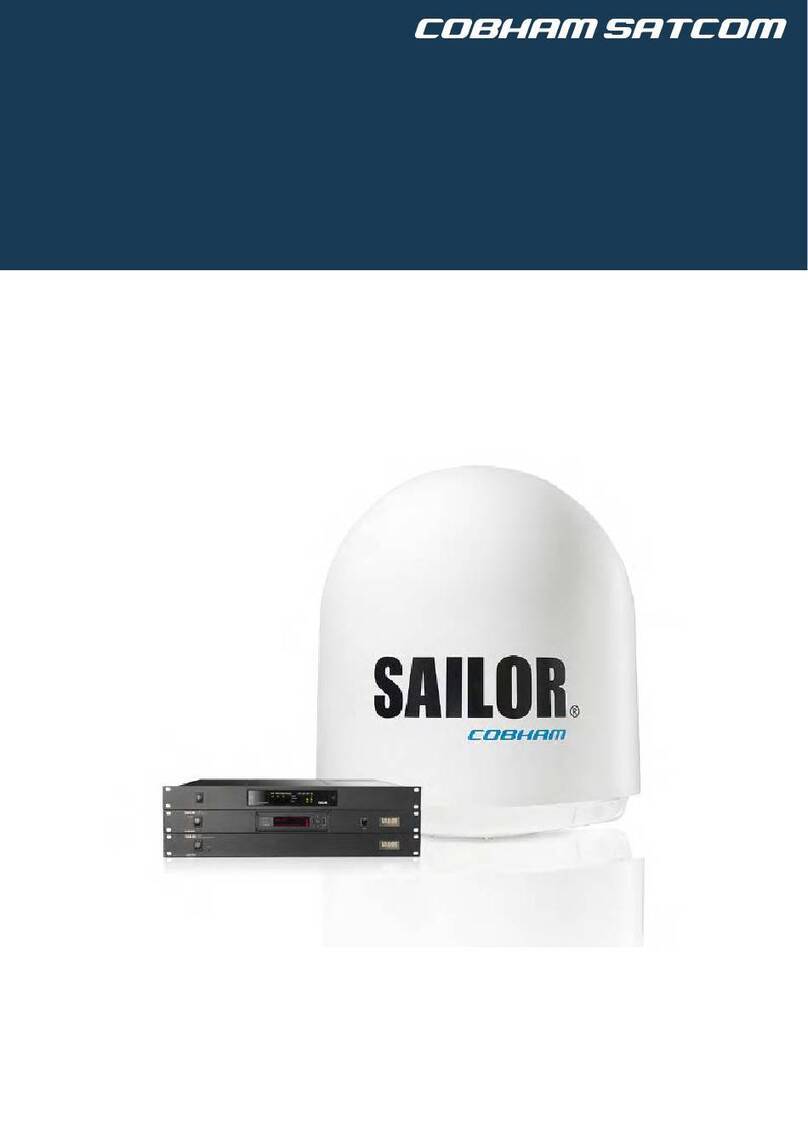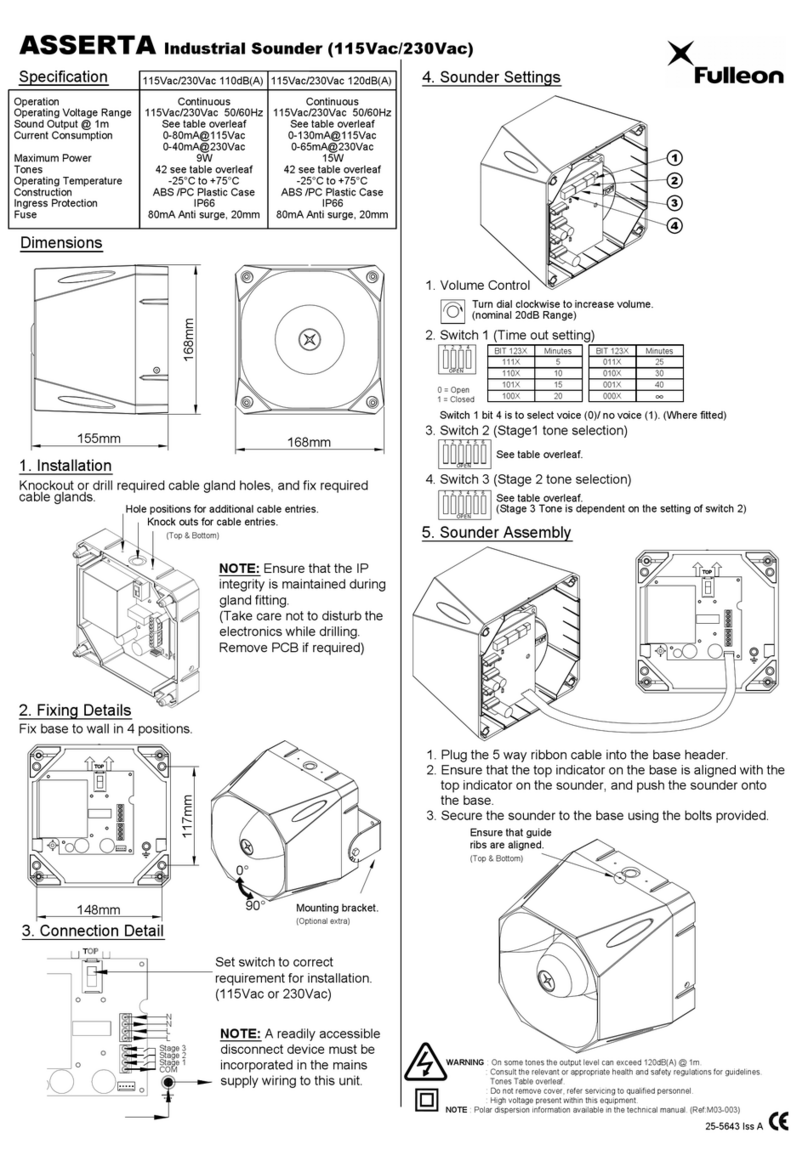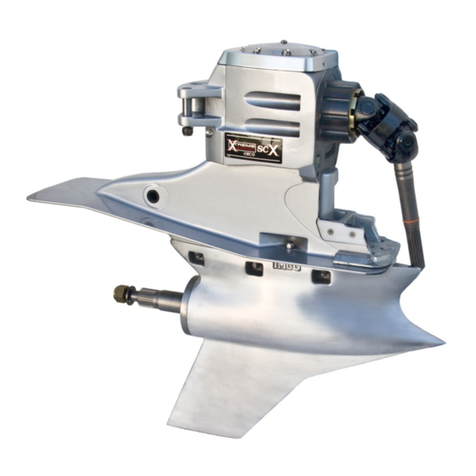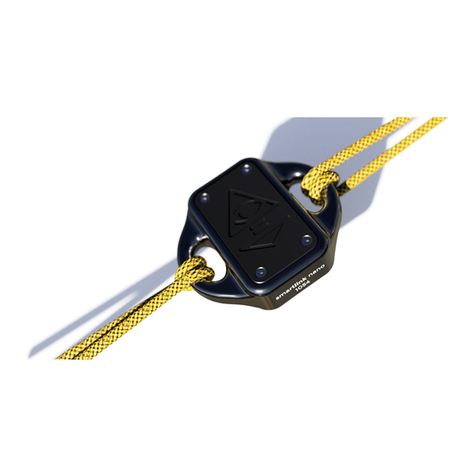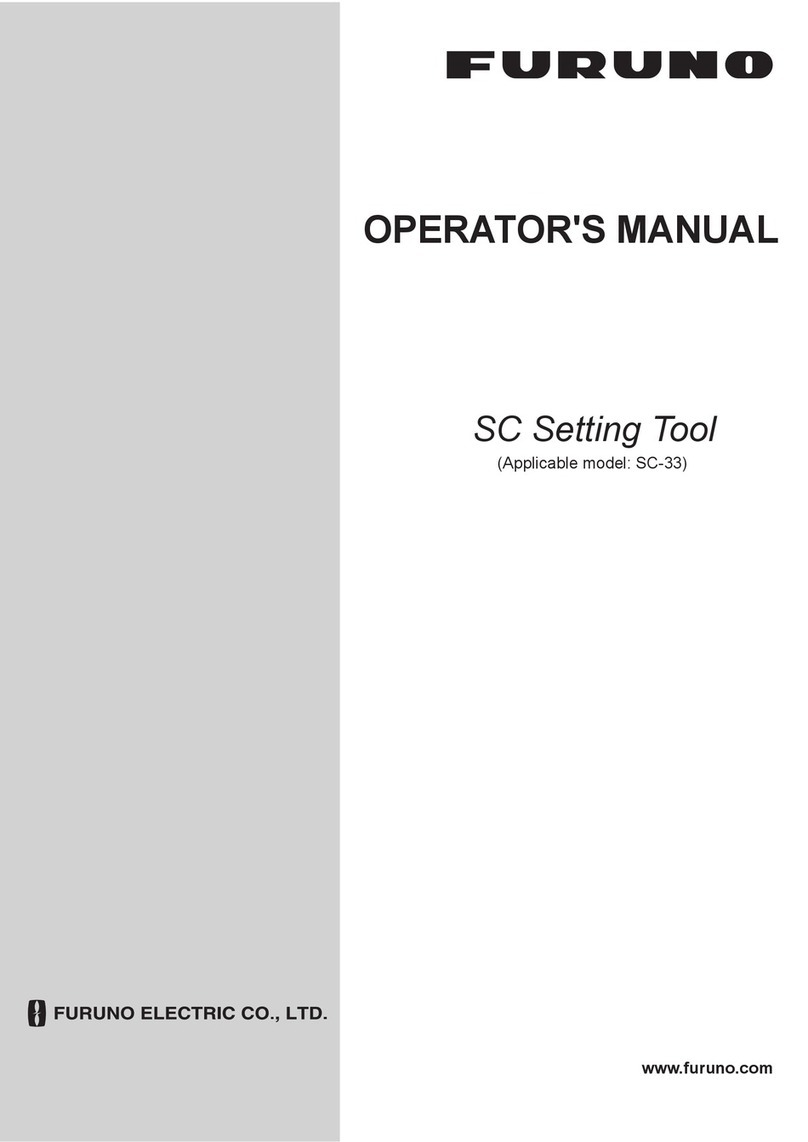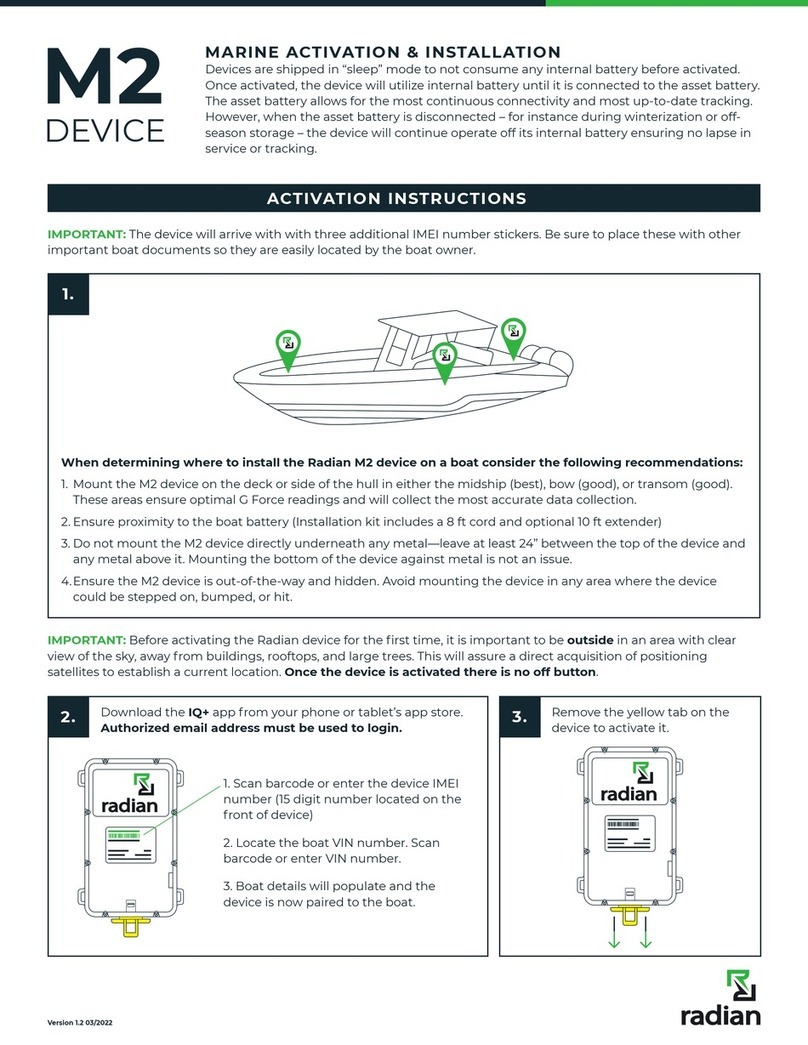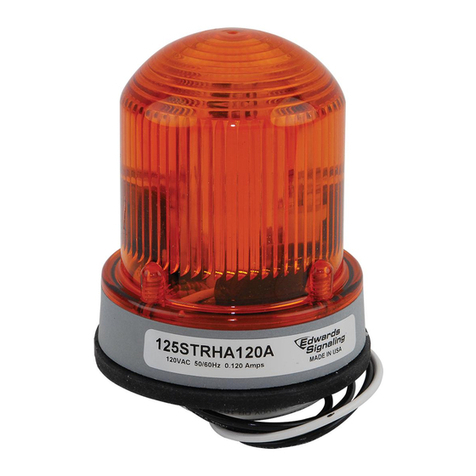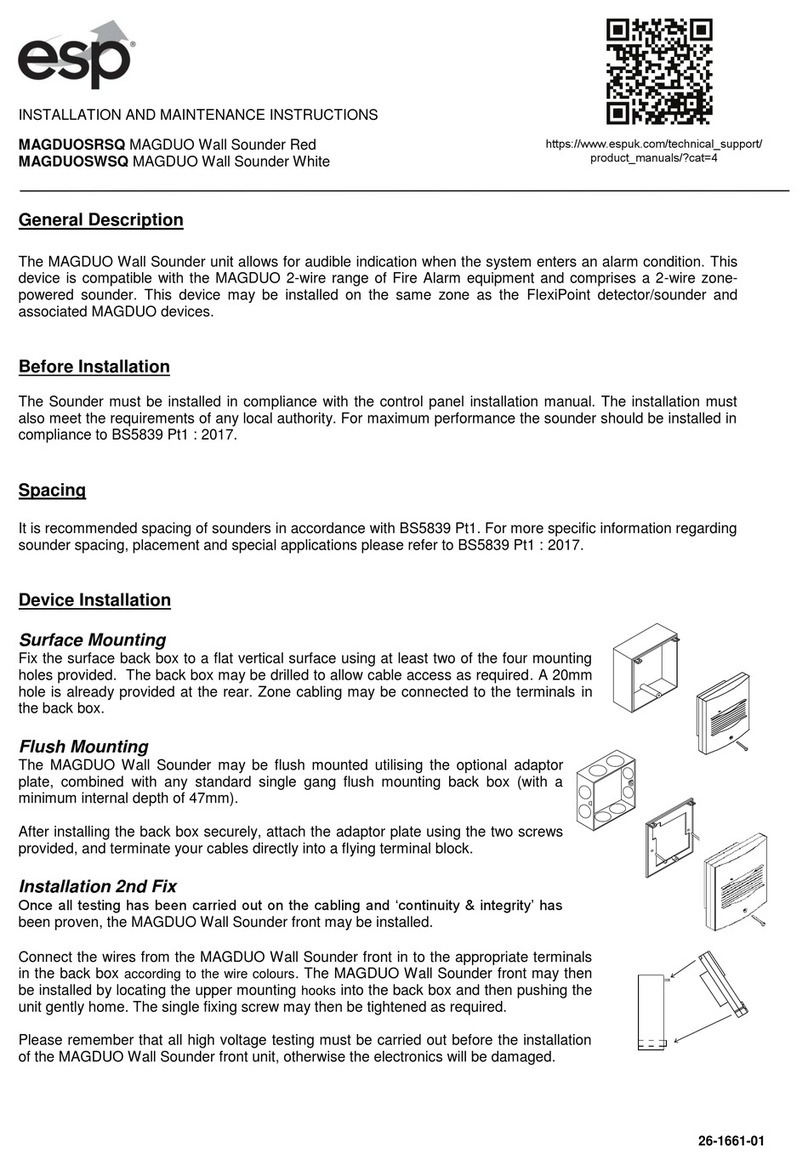Risco WL S52 Technical specifications

External Wireless
Sounder
Model: WL S52
Installation and Programming Instructions

Wireless Sounder Instructions
2
Table of Contents
Introduction........................................................................................................... 3
Operational Functions.......................................................................................... 3
Alarm / Tamper Indication...................................................................................3
Low Battery Indication.........................................................................................3
Supervision .........................................................................................................3
Pre Alarm Indication............................................................................................3
Sounder Self Testing...........................................................................................3
LED display.........................................................................................................3
Mounting the Sounder.......................................................................................... 4
Programming the sounder................................................................................... 6
Step 1: Sounder/Receiver Communication Set up..............................................6
Step 2: Setting the Sounder Parameters.............................................................7
Strobe Control............................................................................................... 7
Strobe Blink................................................................................................... 7
Strobe Arm Squawk ...................................................................................... 7
Adjusting the Volume .................................................................................... 7
Muting Tamper.............................................................................................. 7
Setting Supervision Time .............................................................................. 8
Pre Alarm indication...................................................................................... 8
Step 3: Testing the Sounder ...............................................................................8
Communication Test ..................................................................................... 8
Diagnostics.................................................................................................... 8
Replacing Batteries .............................................................................................. 9
Technical Information........................................................................................... 9
Electrical .............................................................................................................9
Wireless..............................................................................................................9
Environment........................................................................................................9

Wireless Sounder Instructions 3
Introduction
RISCO Group's two-way External Wireless Sounder is designed to extend the
signaling capabilities of RISCO Group's WisDom and Agility wireless systems. The
wireless sounder offers an easy and flexible solution for quick installation. The
sounder is powered by its own batteries and communicates wirelessly with the
security panel.
Up to 3 wireless sounders can be assigned to a system.
Operational Functions
Alarm / Tamper Indication
Upon an alarm condition, the sounder will be activated for a period of time defined
by the system (Bell Time Out parameter).
Low Battery Indication
Upon a low battery condition a trouble indication is sent to the panel.
There are 2 types of low battery indications:
ÊRadio low battery
ÊSpeaker low battery
Supervision
Each sounder can be defined to be supervised by the panel. The system generates
a local fault signal identifying the sounder whose signal is not received during a
predefined time, followed by a report to the Alarm Receiving Center (if defined).
Pre Alarm Indication
When an entry time starts, the system transmits a pre-alarm signal to the sounder.
If the system is unset before the entry delay time expires, a cancellation signal is
sent to the sounder.
If the sounder does not receive a cancellation signal within the entry delay time, the
sounder will be activated.
Sounder Self Testing
Once placing all batteries in the battery holders or pressing on the reset switch
located on the PCB (with the tamper switch open), the sounder performs a
functional self test indicated by a strobe flash squawk sound.
LED display
The wireless sounder has 2 LEDs located on the PCB. These LEDs are
enabled when the tamper is open and 10 minutes after the tamper is closed.
Red: Indicates transmission
Yellow: Indicates a low battery
Red and Yellow (3 seconds): Confirms successful learning

Wireless Sounder Instructions
4
Mounting the Sounder
To mount the sounder follow this procedure:
Step 1:
Remove the Cover Screw Assembly. The screw cover is opened by asserting
thumb pressure on it and pushing outward to reveal the cover screw.
Unscrew the cover screw and hinge the lid open to approximately 45 degrees, lift
the cover away until the tongue of the hinge engages. Squeeze the two halves of
the tongue together and remove the cover.
See figure 1:
Figure 1
Step 2:
Once the cover has been removed it may be placed in the Cover Holder Clip. This
is done by placing the cover hinge into the second hinge slot just inboard of the
outer hinge slot.
See figure 2:
Figure 2
Step 3:
Using the base plate as a drilling template, mark the drill holes on the wall. Drill the
holes and insert the wall plugs.
Step 4:
Fix the sounder to the wall.
Step 5:
Access to the PCB is gained by releasing the inner cover retaining the clip and
lifting the cover upward until it locks into the raised position.
See figure 3:

Wireless Sounder Instructions 5
Figure 3
Step 6:
Insert the supplied batteries. The sounder is ready for communication set up with
the system.
Step 7:
The single Tamper switch may be fitted in two positions:
a) to provide screw cover and rear tamper.
-or-
b) to provide front cover and rear tamper.
See figure 4:
Figure 4
Step 8:
Re-attach the outer cover.
Step 9:
After the sounder is trained, close the lid and lock the Cover Screw Assembly.

Wireless Sounder Instructions
6
Speaker & Strobe
Batteries
(6V, Serial
Connection)
Speaker
Strobe
LEDS
Two Indication
LEDs
Reset Switch
SPEAKER
TAMPER
Radio Batteries
(3V, Parallel
Connection)
External Sounder - PCB Diagram
Programming the sounder
Programming the wireless sounder consists of the following 3 steps:
1. Setting communication between the receiver and the sounder
2. Setting sounder parameters
3. Testing the sounder
Step 1: Sounder/Receiver Communication Set up
The sounder must identify itself to the system's receiver by writing its ID into the
system. Perform according to the following steps:
1. Set the receiver to the Write mode.
NOTE:
In the WisDom , as a first step, you need to allocate the sounder in the following programming location:
Main Engineer menu> 9)Devices > 2)Sounder > 1) Allocation > Select sounder> Choose ODWS1
2. Select the sounder's ID.
3. Unpack the supplied batteries.
4. Insert two speaker batteries and three Radio batteries into the batteries holders.
5. After a squawk is heard and the sounder's strobe flashes you have 10 seconds to
press on the tamper switch for at least 3 seconds. If the sounder is successfully
recognized, the system will sound a confirmation beep and the sounder will initiate
a second squawk sound and the 2 LEDs on the sounder will flash for 3 seconds.
6. Repeat the process for other sounders in the system.

Wireless Sounder Instructions 7
Step 2: Setting the Sounder Parameters
Each sounder can be defined with different sets of parameters. The following table
describes the list of parameters of the sounder.
NOTE:
For the specific programming location of each parameter refer to the system manuals.
Strobe Control
Defines the Strobe operation mode:
¾Always Off: The strobe is deactivated
¾Follow Bell (Default): The strobe is activated when the sounder bell is
triggered
¾Follow Alarm: The strobe is activated when an alarm event occurs in the
system
Strobe Blink
Defines the number of times the strobe will flash per minute (Default 40 times per
minute). Strobe Blink options:
[1] 20 times per minute [4] 50 times per minute
[2] 30 times per minute [5] 60 times per minute
[3] 40 times per minute (Default)
Strobe Arm Squawk
The time that strobe blinking will continue when set is performed (Default: 05)
NOTE:
If the sounder’s squawk strobe is defined as NO (Refer to the Allocation section) this parameter will be
ignored.
Adjusting the Volume
Defines the sounder sound volume for the following system modes:
¾Exit / Entry: The sound produced during Exit/Entry time (Default: 0)
¾Alarm: The sound produced during alarm (Default: 9)
¾Squawk: The sound produced during squawk sounds (Default: 9)
The sound volume range is between 0 (silent) to 5 (maximum volume).
Muting Tamper
This feature disables a tamper alarm from the sounder and it is recommended to be
used when replacing the sounder's batteries.
NOTES:
1. An ongoing tamper alarm will not be disabled.
2. WisDom: This feature is controlled under the Engineer Menu (Quick key [9][2][5]). Tamper alarm
will be disabled during the current installation programming period.
3. Agility: This feature is controlled under the Grand Master menu. Tamper alarm will be disabled for
20 minutes.

Wireless Sounder Instructions
8
Setting Supervision Time
Specifies how often the system generates a supervision request to the sounder.
If any of the sounders does not respond to the request at least once during the
receiver supervision time, the system will regard the accessory as lost.
NOTE:
The receiver supervision time should be higher than the sounder supervision time in order to
eliminate false lost event.
Range: 00-255 minutes
Default: 58 minutes
NOTE:
WisDom: Engineer menu: 1) System > 1) Timers > 9) Accessory supervision time
Agility: Engineer menu: 1) System > 1) Timers > TX supervision
Pre Alarm indication
This wireless sounder incorporates a pre-alarm feature that enhances the security of
the system by producing a local alarm in case of sabotage.
If defined, the system sends a pre-alarm signal to the sounder at the beginning of the
entry delay. If the sounder does not receive a cancellation signal from the system at
the end of the entry time, the sounder goes into alarm mode.
NOTE:
WisDom (Ver 4.25): Engineer menu Quick key 1) System> 2)Parameters> 35)Sounder Pre alarm
Agility: Engineer menu [1][2] > Advanced > Sounder Pre alarm
Step 3: Testing the Sounder
Communication Test
The sounder communication test performs a communication test between the sounder
receiver and the system.
¾To perform a communication test:
1. Access the communication test option.
NOTE:
WisDom: Engineer menu > 9) Devices > 2) Sounders > 3) Communication test
Agility: Engineer menu > 2) Testing > 5) Sounder > 1) Communication test
2. The system sends a test signal to the sounders. A number between 00-99 indicates
the strength of the communication signal between the system and the sounder.
NOTE:
For successful communication, the strength of the signal should be higher that the sounder receiver
noise threshold level.
(WisDom: Engineer menu quick key [9][2][4], Agility: Engineer menu> 2)Testing > 1)Main unit >
1)Calibration).
Diagnostics
The Diagnostics menu enables to test parameters reflecting the operation of the
sounder:
ÊSpeaker batteries voltage: Tests the selected sounder’s speaker batteries voltage
ÊRadio batteries voltage: Tests the selected sounder’s radio's batteries voltage
ÊSounder version: Displays information regarding the sounder's version

Wireless Sounder Instructions 9
NOTE:
WisDom: User menu: 4) Maintenance > 7) Sounders > 1) Diagnostics
Agility: Engineer menu > 2) Testing > 5) Sounder > 2) Battery test > 3)Version
The diagnostic features can also be performed from the Upload/Download software, locally or
remotely.
Replacing Batteries
1. Before opening the sounder it is advised to silence the tamper alarm using the
Tamper Mute option.
2. Remove the screws on both sides of the external wireless sounder and open the
cover of the sounder upwards.
3. Insert the supplied batteries.
4. Remove the old batteries from the metal clips and replace them with the new ones.
Pay attention to the polarity.
5. Replace the cover and lock the screws.
NOTES:
Dispose of old batteries according to your local regulations.
Risk of explosion if battery is replaced by an incorrect type.
Technical Information
Electrical
Power supply 5 x CR123, 3V Lithium batteries
3 batteries for the wireless system
2 batteries for signalling
Battery lifetime 3 years (typical)
Sounder volume 105 dB @ 1 meter (3.3") - adjustable
Strobe lens Polycarbonate
Flash frequency 60 times per minute (max.)
Dimensions (HxWxD) 300x 325x70 mm (11.8 x 12.8 x 2.8 inch)
Weight (including batteries) 1 Kg (2.2lbs)
Wireless
Wireless technology Bidirectional narrow band
Frequency 868 MHz or 433MHz
Range 150m (492’) Line of sight
Monitoring YES
Modulation Type ASK
Environment
Temperature range - 25°C to 60°C
IP class IP 44
Environment class Class IV

Wireless Sounder Instructions
10
RTTE Compliance Statement
Hereby RISCO Group declares that this wireless sounder is in compliance with the
essential requirements and other relevant provisions of Directive 1999/5/EC.
For the CE Declaration of Conformity please refer to our website: www.riscogroup.com.
FCC Note:
This equipment has been tested and found to comply with the limits for a Class B digital
device, pursuant to Part 15 of the FCC rules. These limits are designed to provide
reasonable protection against harmful interference in a residential installation. This
equipment generates, uses and can radiate radio frequency energy and, if not installed
and used in accordance with the instructions, may cause harmful interference to radio
communications. However, there is no guarantee that interference will not occur in a
particular installation. If this equipment does cause harmful interference to radio or
television reception, which can be determined by turning the equipment off and on, the
user is encouraged to try to correct the interference by one or more of the following
measures:
a) Reorient or relocate the receiving antenna.
b) Increase the separation between the equipment and receiver.
c) Connect the equipment to an outlet on a circuit different from that to which the
receiver is connected.
d) Consult the dealer or an experienced radio/TV technician.
FCC ID: JE4RWRT433
IC: 6564A-RWRT433
FCC Warning
The manufacturer is not responsible for any radio or TV interference caused by
unauthorized modifications to this equipment. Such modifications could void the user's
authority to operate the equipment.

RISCO Group Limited Warranty
RISCO Group Ltd. and its subsidiaries and affiliates ("Seller") warrants its products to
be free from defects in materials and workmanship under normal use for 24 months
from the date of production. Because Seller does not install or connect the product and
because the product may be used in conjunction with products not manufactured by
the Seller, Seller cannot guarantee the performance of the security system which uses
this product. Seller's obligation and liability under this warranty is expressly limited to
repairing and replacing, at Seller's option, within a reasonable time after the date of
delivery, any product not meeting the specifications. Seller makes no other warranty,
expressed or implied, and makes no warranty of merchantability or of fitness for any
particular purpose.
In no case shall seller be liable for any consequential or incidental damages for breach
of this or any other warranty, expressed or implied, or upon any other basis of liability
whatsoever.
Seller's obligation under this warranty shall not include any transportation charges or
costs of installation or any liability for direct, indirect, or consequential damages or
delay.
Seller does not represent that its product may not be compromised or circumvented;
that the product will prevent any personal injury or property loss by burglary, robbery,
fire or otherwise; or that the product will in all cases provide adequate warning or
protection. Buyer understands that a properly installed and maintained alarm may only
reduce the risk of burglary, robbery or fire without warning, but is not insurance or a
guaranty that such will not occur or that there will be no personal injury or property loss
as a result.
Consequently seller shall have no liability for any personal injury, property damage or
loss based on a claim that the product fails to give warning. However, if seller is held
liable, whether directly or indirectly, for any loss or damage arising from under this
limited warranty or otherwise, regardless of cause or origin, sellers maximum liability
shall not exceed the purchase price of the product, which shall be complete and
exclusive remedy against seller.
No employee or representative of Seller is authorized to change this warranty in any
way or grant any other warranty.
WARNING: This product should be tested at least once a week.

Contacting RISCO Group
RISCO Group is committed to customer service and product support. You can contact
us through our website www.riscogroup.com or as follows:
United Kingdom
Tel: +44-161-655-5500
technical@riscogroup.co.uk
USA
Tel: +1- 631-719-4400
Support-usa@riscogroup.com
Italy
Tel: +39-02-66590054
Brazil
Tel: +1-866-969-5111
Spain
Tel: +34-91-490-2133
China
Tel: +86-21-52-39-0066
France
Tel: +33-164-73-28-50
Poland
Tel: +48-22-500-28-40
support-pl@riscogroup.com
Belgium
Tel: +32-2522-7622
support-be@riscogroup.com
Israel
Tel: +972-3-963-7777
All rights reserved.
No part of this document may be reproduced in any form without prior written
permission from the publisher.
© RISCO Group 03/09 5IN1224
Table of contents
Other Risco Marine Equipment manuals
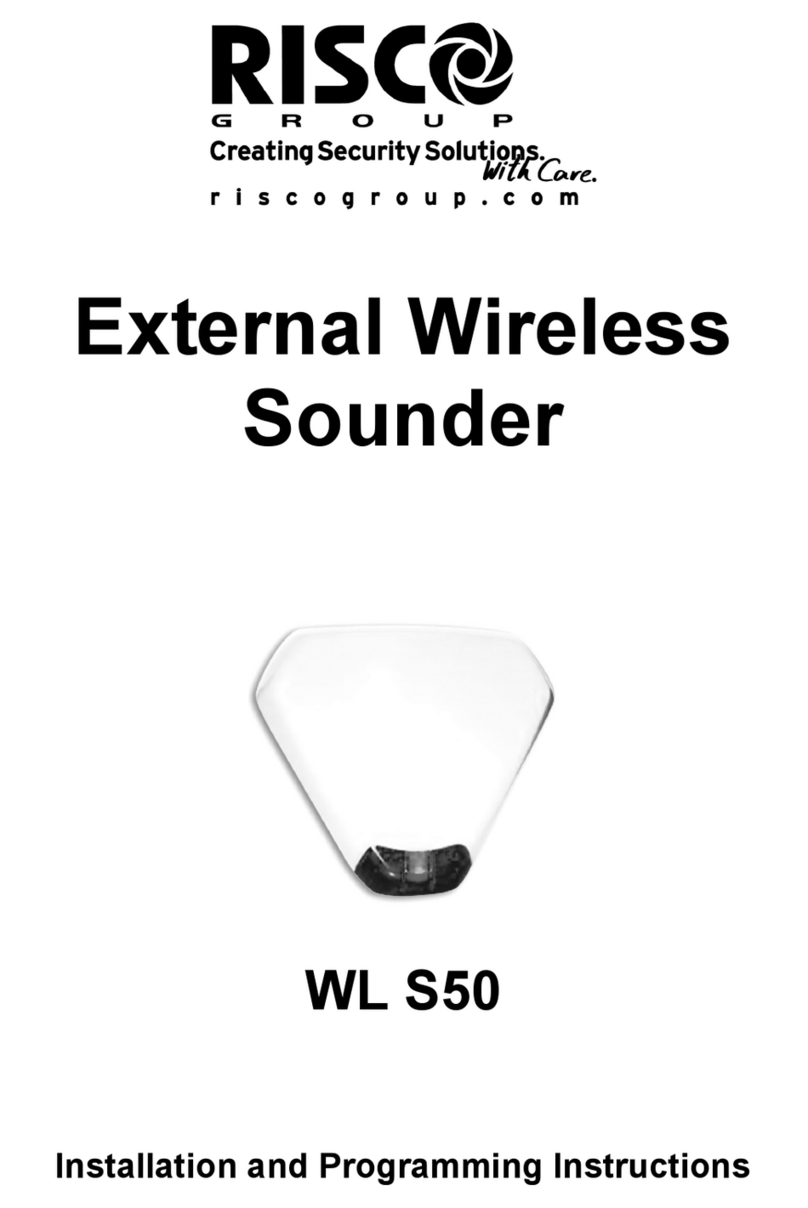
Risco
Risco WL S50 Technical specifications
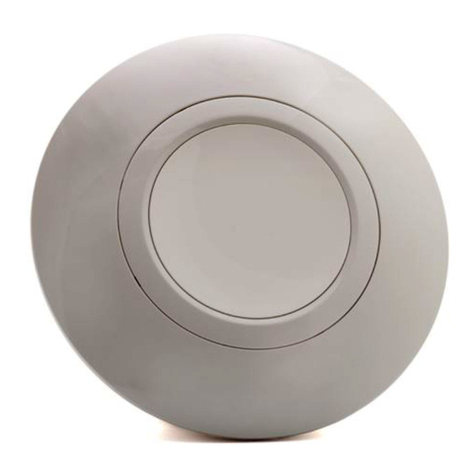
Risco
Risco WL S42 Technical specifications
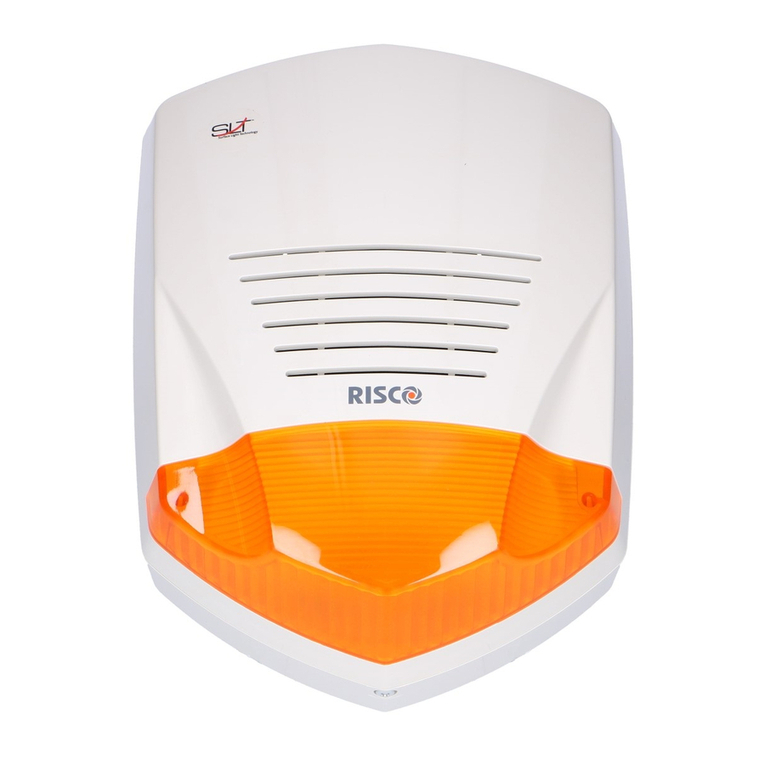
Risco
Risco ProSound Assembly instructions
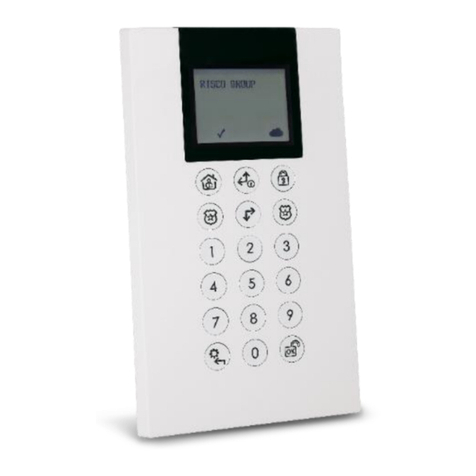
Risco
Risco RW432KPP User manual

Risco
Risco ProSound Assembly instructions

Risco
Risco Rokonet ProSound Assembly instructions

Risco
Risco WL S42 User manual
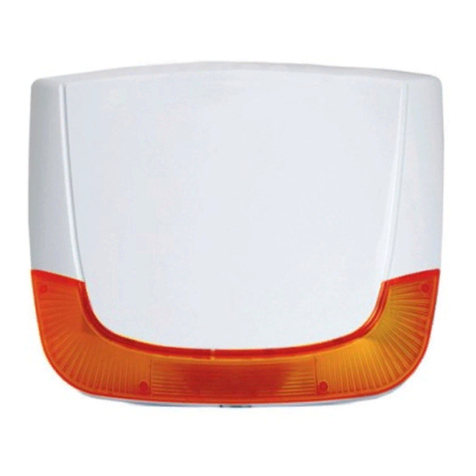
Risco
Risco WL RWS401 Technical specifications
